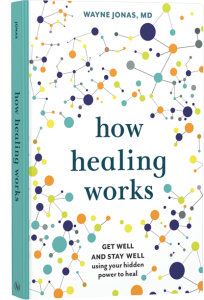How being prepared can help you both
When was the last time you felt relaxed at a doctor’s appointment?
No hurry, just you and your health care provider discussing your symptoms, reviewing your general health, and maybe wrapping up with some routine tests.
You’d walk away with your questions answered, inspired to tackle any problems you brought in and improve your physical, mental, and emotional well-being. Your doctor could say goodbye with the sense of having helped one more person towards whole person health.
Does this sound like a dream? If so, we’re here to tell you that it’s possible. Being organized and prepared can help you and your doctor or other health care provider make the most of appointments.
The tips below can be used for any type of appointment – general checkup, specialist, or if you are going in because you don’t feel well.
Define your goals
Are you seeking a new doctor for general care? Looking for help with a condition you’ve had for years or something that just cropped up? Hoping to find a specialist or family doctor?
Think about what you need, in the moment and in general.
For example, if you have sudden pain in your jaw, you may need a video visit right away to ask about that – and only that. If your doctor isn’t available, you might call your dentist’s office.
Your goal: figure out what’s making your jaw hurt and make it stop.
If you live with migraines and want to manage them with minimal medication, that’s a bit different.
Goal: learn which lifestyle and integrative health approaches are proven to help migraine, pick a couple to try, and keep track of how the new approach makes you feel. An example is to ask about some of the new electromagnetic drug-less approaches to migraine treatment that have just been FDA approved.
Maybe you’re interested in whole person health. If you’re finding a new doctor, look at the physician’s bio to see what their focus is. Tell prospective providers up front, at the start of your appointment, that you’re interested in whole person health, integrative and preventive care.
Goal: Ensure that you and your physician are on the same page about your preferences for managing your health.
Embrace your team
For any condition lasting longer than a few weeks, you likely need ongoing care provided by a team. For example, if you have type 1 diabetes, high blood pressure, or high cholesterol, you may see your family doctor, a diabetes educator, a nutritionist, a foot care specialist, and an eye doctor, because these conditions affect many different systems.
But even a basic “family doctor”- type care takes a team approach now. In the past few months, you may have …
- Emailed your health care provider’s billing office about the cost of a test or shot.
- Talked to a medical assistant or advice nurse about symptoms such as a cough.
- Gotten an email from your doctor about a picture you sent in, or a video visit.
- Seen your doctor, a nurse, and a lab technician at an in-person appointment.
- Talked to your pharmacist about how a new medication works.
We love the image of the old-fashioned family doctor, a solo practitioner who solves every problem in the space of a TV show. But Marcus Welby, MD, Dr. McDreamy, and Dr. Quinn, Medicine Woman, have done health care providers a disservice. It takes a village to provide mind-body-spirit care. You might want to count your online yoga instructor, your psychologist, or spiritual leader as part of your health care “team.”
Prepare for your visits
You’ve heard it a million times. Write down your questions. Make a list of all the medications you take and bring it to the doctor with you.
Those are great ideas. But they backfire when you bring a list of 20 questions to your annual physical or an appointment for allergy shots (because why not talk about your lower-back pain while you’re here, right)? Before a visit, prioritize you questions with those that are essential for you. Try to keep the number to three or less.
Do your homework – but not too much
Some questions can be answered from the internet and allow you to focus the time you have with your doctor more effectively. So do your homework before you come. But don’t be come “Dr. Google.” Don’t think that you have all the answers from a internet search or podcast. Much information in the internet is also wrong, or just does not apply to you so could throw you off target.
Focus on getting information from reliable and evidence-based sources. Many top medical schools and research centers – such as the Mayo Clinic, Harvard School of Public Health and the National Institutes of Health – have great public websites with credible, up-to-date information. Stick to those before you go.
Let your doctor tell you what they need
“When I see someone come in with a huge sheaf of papers, or a notebook, it sets off alarm bells,” says one specialist (whom we’ll allow to remain anonymous). “Even a longer appointment isn’t long enough to go through all the documents, or even a few.”
Instead, our expert suggests making sure your family doctor or specialist has access to all your medical records ahead of time. These days, most physicians’ offices use electronic medical records. This means they can see your past appointments, test results, and treatments with a few clicks of the mouse. Your privacy is enhanced, with no risk of dropping a vital piece of paper or having personal information stolen from your car or purse.
“I can look up exactly what I need,” says another specialist. “It takes just a few minutes to see someone’s MRI or X-ray. On my computer, I can zoom in and out, rotate the image, and make my own decision about what I see. “
Use a “don’t forget” list
The best list isn’t for your doctor – it’s for you. Keep a list of everything you take, daily or just sometimes: vitamins, supplements, prescription and non-prescription medicines. Jot down your allergies. If there’s something big in your family medical history, like your mom’s ulcers or your dad’s heart condition, note that down too. When the medical assistant reviews all this with you, use your list to make sure they get it into the computer – right where your doctor will always have access to the information, whether you’re there or not.
Be realistic about time
Doctor’s appointments are scheduled to last a specific length of time. This is determined by what you say when you make the appointment. For example, the time frame for a new patient with a single specific concern is 15-30 minutes, with an average of 20 minutes spent with the doctor.
If it takes you 5 minutes to explain a problem to your doctor, at least 5 minutes for them to examine you, and 5 minutes for them to talk about the diagnosis, that leaves you both just 5 minutes to wrap things up, make a treatment plan, and make sure you understand everything.
If you’ve seen the doctor before, your visit will be shorter. Be aware that you are scheduled for about 10 minutes with the actual doctor if you come in for a specific concern. But don’t forget the team! You’ll have time with the medical assistant or nurse before seeing your main health care provider.
Make the most of this time, because what you say is going into your medical record and the doctor will see and use the information. Avoid “saving” or withholding information until the doctor comes in, because then they’ll be hearing something they didn’t expect (they do review your information before they come in the door).
To make the most of your time and your doctor’s, we suggest:
- Keeping questions on topic – If you’re coming in for a sore throat, don’t ask questions about your back. Make a separate appointment if your back is a concern.
- Bringing clear notes about your current problem – Use your “don’t forget list” to jot down what, when, how long, and your main symptoms. Keep it short and focused.
- Typing your notes – Much easier (and quicker) to read. Plus, you can keep a copy and give one to your doctor.
Think outside the “one appointment, in person” box
“I make several appointments back to back so I can spend an hour with my doctor.”
“I schedule video visits so I don’t have to leave work.”
“I take both kids for shots at once.”
“I email my doctor, and she tells me if she wants to see me in person.”
“The advice nurse calls me back after talking with the doctor about my problem.”
“My pharmacist helps me understand my medication.”
These are all ways people make the most of health care resources. It’s important to remember that you have enormous access to health care through telephone and digital resources. This is true even if you use a community health center or low-cost clinic for students or workers, as they offer virtual visits, phone access, and walk-in appointments.
Take your health into your own hands
The best way to make the most of your health care is to take over as team captain. Think about your wishes, any health conditions you have, and how you like to get care. Are you a “get in, get out, get it done” person? Or do you want to spend time working with a therapist, nutritionist, or other provider regularly?
Feeling in charge of your health care is a big step towards mind-body-spirit health and wellness. We’ve included some free resources below to help you take charge and make the most of your time with your doctor and other health care providers.
Resources
For patients, families, and caregivers
- Get Well and Stay Well Recap: Healing Your Mind, Body, and Spirit
- What Men Should Know About their Health
- Managing Hypertension Beyond Medication
- The Caregiver’s Companion: Caring for Mind, Body, and Spirit
For health care providers
We developed a tool called the HOPE Note to help you deliver whole-person care. You may also be interested in Dr. Jonas’ book How Healing Works.

Take Your Health Into Your Own Hands
Drawing on 40 years of research and patient care, Dr. Wayne Jonas explains how 80 percent of healing occurs organically and how to activate the healing process.

